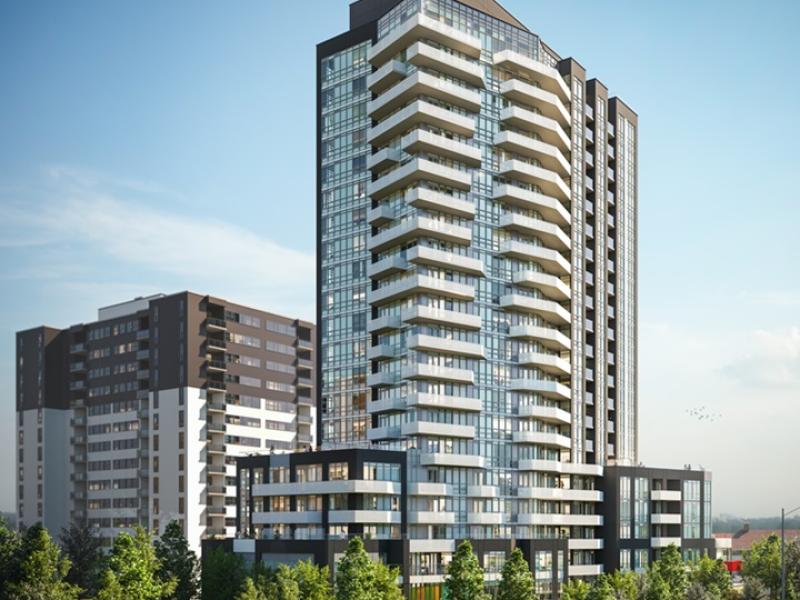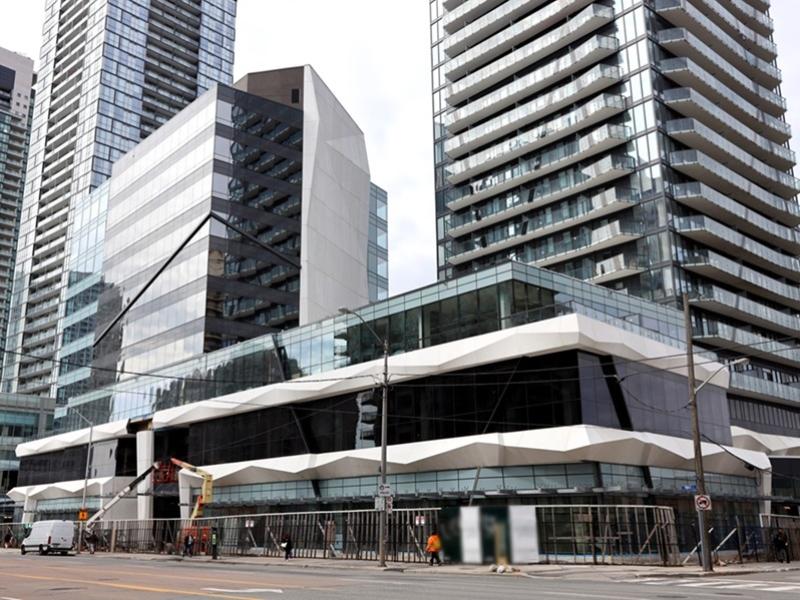
At a time when many major institutional players were pulling back from Calgary’s downtown office market, a relatively new player saw opportunity where others saw retreat.
“Why, when everybody else was exiting or fatiguing - and we're talking about some pretty sophisticated owners, right? We're talking about lifeco's and REITs and pension funds - why did we see that as the opportunity to step in?” said Gabe Davis, principal and CEO of Title Properties. “Maybe a lot of it has to do with being in business for as long as we've been in business.
"We've seen cycles before.”
Title Properties officially launched in 2023, headquartered in Vancouver, and has since built a growing portfolio in Calgary. The company is just two years old, but its founders aren't new to the industry.
“Being 25 years in business. It doesn't matter what the industry is, I've seen cycles and I have a belief that these cycles are often driven by fear. They’re driven by more human conditioning and I don't necessarily really just buy into that,” Davis told RENX. “Oftentimes in real estate specifically it’s a timing issue.
“It's not that office is a dead sector. I’ve seen cycles in residential. I’ve seen cycles in industrial. I’ve seen cycles in commercial. This is a cycle in office, and I saw this as a super-cycle.”
Title Properties acquisitions in Calgary
Title Properties has made a significant imprint in Calgary’s core. As executive vice-president Erin Joyner explained, “We have three office towers in the centre core of Calgary: Calgary House at 550 6th Ave SW, Canada Place at 407 2nd Street SW, and Five Twenty at 520 5th Ave SW.”
“We also have one more - it’s called McCall Court at 4311 12th Street NE. It's an office park,” Davis added.
The properties were purchased within a two-month span in November and December 2023. “Collectively, the four properties are 670,000 square feet,” Joyner said.
So why Calgary, and why now, when the city’s downtown office market still has elevated overall vacancy levels?
“It seemed like there was a special, unique opportunity in that marketplace specifically,” Davis replied.
In the past downtown office buildings have primarily been owned by institutions and it was prohibitive for family businesses from a cost perspective to enter the marketplace.
“We read the same story that everybody else read. The same narrative. 'This is dying.' 'Calgary is the worst of the worst.' 'It’s 50 per cent vacancy,' ” Davis explained. “Rather than just reading the news and believing it, we went out there and we walked the streets.
"It was quite apparent, and Erin reported back that it is not what it seems. You do have a lot of vacancy, but it's not across the board.”
"The office is not dead . . ."

Older buildings outside the core were seeing the most vacancy and driving vacancy rates up.
“When you identify what it is that differentiates the two, then you start to realize that there's nuances. It's not the entire office sector. The office is not dead - it just needed to evolve,” Davis said. “If you looked at Ampersand (by Aspen Properties), they did such a brilliant job . . . those are old, old buildings, but they did such a beautiful job creating a community, amenitizing it and making it a place that people wanted to go.
“You saw that office is not dead. It’s just the expectations of what office is changed.”
Joyner said traditional classifications like class-A and -B are increasingly out of date: “We've educated ourselves as well and realized that the classification system is outdated and totally subjective. Really, who defines what is an A-class versus B versus C versus trophy are the brokers,” she said.
“We've been working really closely with the brokerage community to have them view our assets in a new and revised way. We strongly believe that we are an A-class offering across our portfolio.”
They’ve shifted focus from just space to tenant experience.
“It's taking a step back from the traditional approach of office and thinking through a new lens - similar to a hospitality experience,” Joyner explained. “You can have a small little boutique hotel that's considered a five-star hotel . . . It’s all about the experience . . . We’ve really focused our attention on hospitality, service-oriented offerings that put us in an A-class offering.”
Title's five key requirements for an acquisition
In line with that philosophy, Title Properties brought all of its leasing in-house.
“We thought that was a strategic decision that has proven to be quite beneficial," Joyner said. "We've been able to drive occupancy from 73 per cent to 87 per cent across our entire portfolio as a result.”
That is significantly lower than Calgary's overall office vacancy, which remained at approximately 30 per cent as of the end of Q2.
While Title Properties remains interested in further acquisitions, Davis said the criteria has become more refined, involving five key requirements.
“One: it has to be in the centre core - anything east of Fifth. No. 2: it has to be Plus-15 connected. Checkbox No. 3: it has to have amenities. It cannot be an old, tired lobby. You have to have the amenity lounge, the conference centre, a gym, a simulator - something that really brings the community together,” Davis explained.
“No. 4 is, and this is a big one actually, we don't want an anchor tenant in the building . . . There’s a liability to that. There’s an exposure to it. One building has one tenant, the tenant leaves, the building’s 30 years old and all of a sudden it's dead . . . it’s a conversion play. And No. 5: you need these buildings to be stabilized. You need to have them mostly occupied; otherwise you have massive (tenant improvements) and leasing fees and that really kills the deal.”
Title supports Calgary office conversion program
Asked if many buildings fit that profile, Davis was candid: “I don't see many of those opportunities with that criteria left. I think this is the direction office is going - it’s going to be more of an income play. Is it fully stabilized and is it a good income play?”
Title Properties also welcomes the city’s downtown conversion incentives assisting property owners in turning older, underutilized office buildings into residential, hotel and educational uses.
“I think it's brilliant,” Davis said. “It is utilizing these assets for a purpose that's needed. It brings vibrancy and life back to the downtown core by urbanizing it and activating a part of the city that really is underutilized.
“It increases more culture and arts and everything into the downtown. It makes it a vibrant city. It inspires and motivates investors to reinvest into the downtown core when the city does it. They couldn’t do a better job. I couldn’t be happier with it.”










